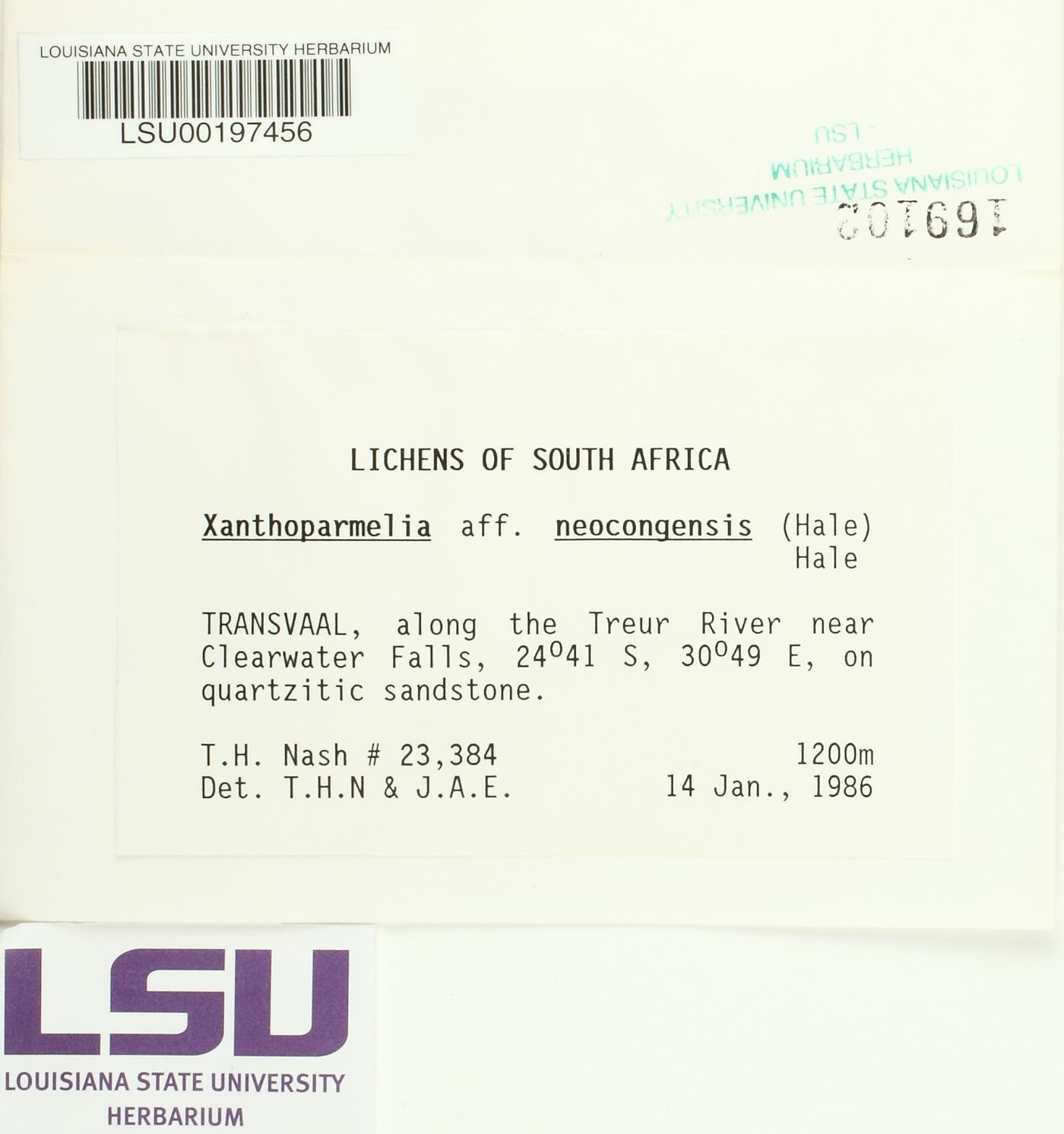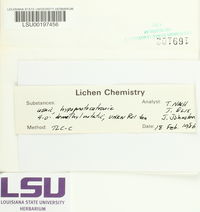
Consortium of Lichen Herbaria
- building a Global Consortium of Bryophytes and Lichens as keystones of cryptobiotic communities -
- Home
- Search
- Images
- Species Checklists
- US States: O-Z >
- US National Parks
- Central America
- South America
- US National Parks
- Southern Subpolar Region
|
|
|
|
Family: Parmeliaceae
|
Nash, T.H., Ryan, B.D., Gries, C., Bungartz, F., (eds.) 2004. Lichen Flora of the Greater Sonoran Desert Region. Vol 2. Thallus: foliose to subcrustose, very tightly adnate, 1-6 cm in diam., dichotomously lobate lobes: sublinear, short, plane to subconvex, separate and contiguous to subimbricate, 0.5-1 mm wide, not lobulate; apices: subrotund, black rimmed, smooth to crenate, eciliate upper surface: dark yellow-green, smooth but becoming transversely cracked, shiny, epruinose and emaculate, densely isidiate isidia: subglobose to cylindrical, breaking off easily, mostly unbranched, 0.08-0.13 mm in diam., 0.1-0.5 mm tall; tips: syncorticate, dark brown, often erumpent but not sorediate; soralia and pustulae absent medulla: white, with continuous algal layer lower surface: black, plane, moderately rhizinate; rhizines: black, simple, 0.2-0.4 mm long Apothecia: rare, adnate, 0.5-1 mm wide, laminal on thallus; disc: cinnamon-brown to dark brown; margin: smooth, pruina absent asci: clavate, 8-spored ascospores: hyaline, simple, ellipsoid, 7-8 x 4 µm Pycnidia: not observed Spot tests: upper cortex K-, C-, KC-, P-; medulla K-, C-, KC-, P- Secondary metabolites: upper cortex with usnic acid (major); medulla with hypoprocetraric acid and 4-Odemethylnotatic acids (both major), conhypoprotocetraric acid (minor). Substrate and ecology: on acidic rocks, often in open habitats World distribution: southern Africa and southwestern North America Sonoran distribution: rare at lower elevations in southern Arizona. Note: Xanthoparmelia neocongensis is closely related to X. weberi, a larger, less adnate species, with a pale lower surface. |
Powered by Symbiota











